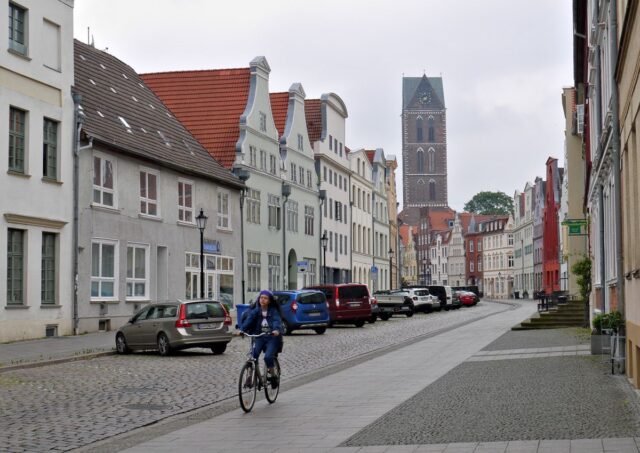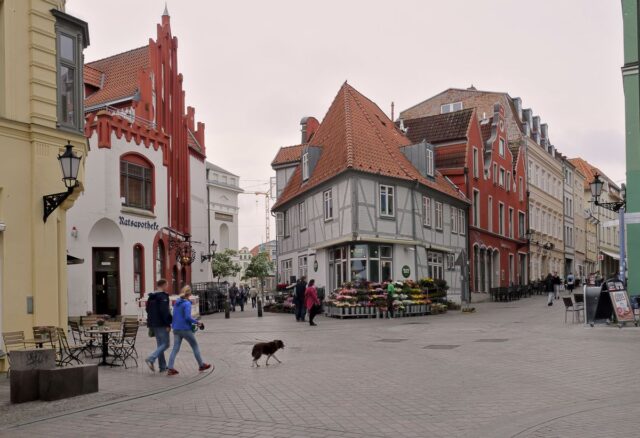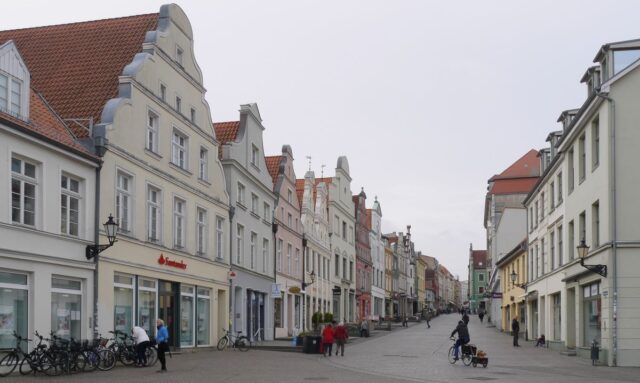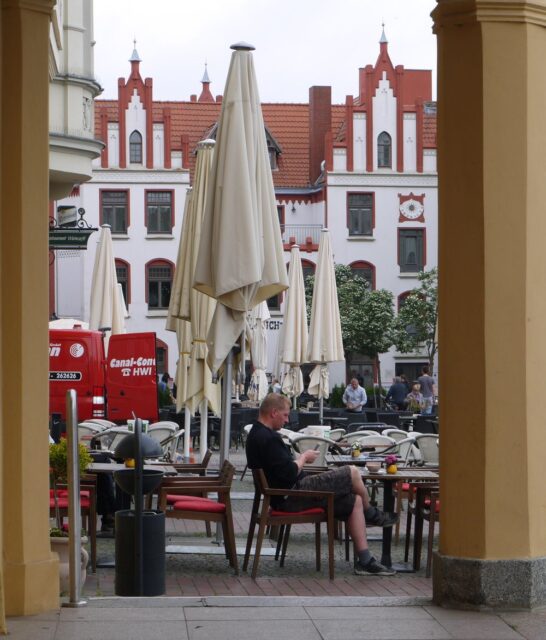Wismar in North Germany is one of the jewels of the Baltic Sea. Its ancient center and inviting port are easy to explore by foot or by bicycle during a weekend. We weren’t the only ones who had the same idea on a rainy weekend in May because Wismar had received plenty of visitors from other parts of Germany, and from neighboring countries Denmark, Sweden and Poland. Although we should have booked accommodation beforehand, there was plenty of space to explore the sights in the town and to find a table at cozy restaurants.
The medieval center of Wismar is a Unesco World Heritage destination. The key landmarks in the town center are the Market Square (Markt in German) and the St Georgen Kirche (Kirche means church) that help you navigate along the streets and alleys. Here is an aerial photo of the old town with the key sights labeled. The port area is a nice place to explore as well.
If you travel along the coast of the Baltic Sea and visit historic towns of the region, the old centers of many towns seem to be built around the same era. The reason is the Hanseatic League, a trading union that allowed businesses to prosper in member towns.
The union developed from local networks of merchants who traveled in Northern Europe. The Hanseatic League dominated trade in North Europe from 13th to 15th century from Tallinn in the east to the coast of England in the west, from Visby in the north to Brugge in the south. The city of Lubeck in Germany was considered the center of the union. More about the Hanseatic League and the historic towns is available here.





